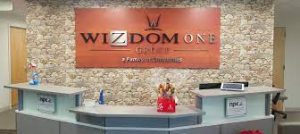Selecting the right sign-making company for your business is a pivotal decision that can significantly impact your brand visibility, customer engagement, and overall success. With numerous options available, it’s essential to navigate through the choices and find a company that aligns with your vision and goals. In this article, we will explore key considerations to help you make an informed decision when choosing a sign-making company.

- Define Your Goals and Vision:
Before diving into the selection process, clearly define your goals and vision for the signage project. Consider what message you want to convey, who your target audience is, and how signage fits into your overall marketing strategy. Having a well-defined vision will guide your discussions with potential sign-making companies and ensure that you choose a partner that understands and shares your objectives.
- Experience and Expertise:
Look for a sign-making company with a proven track record of success. Experience in the industry speaks volumes about a company’s ability to deliver quality products and navigate various challenges that may arise during the process. Assess the company’s portfolio to see examples of their previous work and ensure they have experience in creating signs for businesses similar to yours.
- Reputation and Reviews:
Research the reputation of potential sign-making companies by reading reviews and testimonials from previous clients. Online platforms, social media, and industry-specific forums can provide valuable insights into the experiences of others. A company with positive reviews and a strong reputation is more likely to provide reliable and satisfactory services.
- Creativity and Design Capabilities:
Effective signage goes beyond functionality; it’s an art form that captures attention and conveys a message. Assess the design capabilities of the sign-making company by reviewing their portfolio. Look for creativity, attention to detail, and the ability to tailor designs to fit the unique characteristics of different businesses.
- Technology Integration:
In the digital age, incorporating technology into signage can enhance its impact. Whether it’s LED displays, digital signs, or interactive elements, consider a sign-making company that embraces technological advancements. A company that stays abreast of the latest trends in signage technology can offer innovative solutions to make your business stand out.
- Customer-Centric Approach:
Choose a sign-making company that prioritizes communication and collaboration. A customer-centric approach involves listening to your needs, providing regular updates, and addressing any concerns promptly. Transparent communication throughout the project ensures that both parties are on the same page, fostering a positive working relationship.
- Compliance with Regulations:
Navigating local regulations and obtaining necessary permits for signage can be a complex process. A reputable sign-making company should be well-versed in local zoning laws and regulations, ensuring that your signs comply with all requirements. Avoiding legal issues and delays is crucial for a smooth and successful project.
- Quality of Materials and Craftsmanship:
Evaluate the quality of materials used by the sign-making company. Durable materials contribute to the longevity of your signage, ensuring it remains effective and visually appealing over time. Craftsmanship is equally important; a well-crafted sign reflects positively on your brand and communicates professionalism.
Choosing the right sign-making company is a strategic decision that can significantly impact your business’s success. By considering factors such as experience, reputation, design capabilities, technology integration, customer-centric approach, regulatory compliance, and material quality, you can make an informed decision that aligns with your vision and goals. Take the time to research and collaborate with a company that not only meets your immediate needs but also becomes a reliable partner in enhancing your brand presence.



